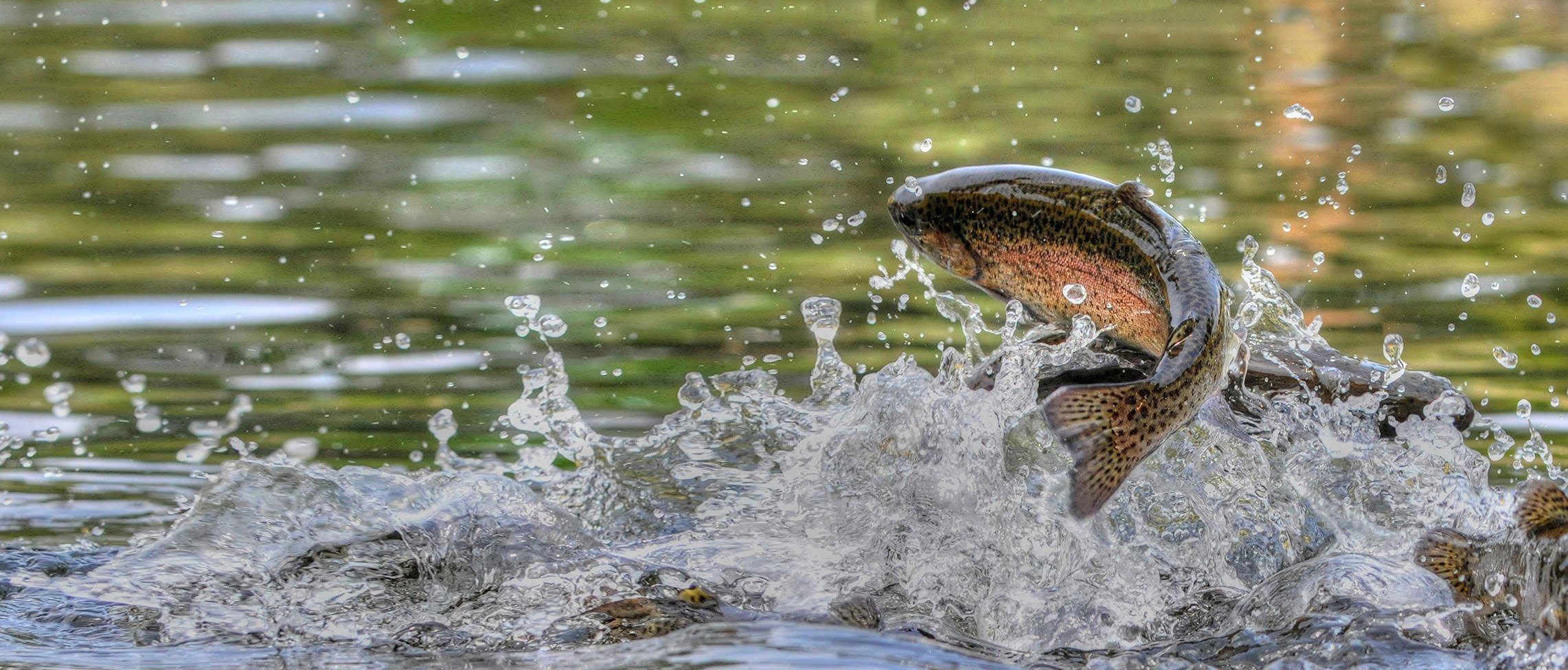So, it's winter, most fishing has stopped and you are wondering how many more cribbage games you can play on your phone. Maybe you are tieing flies and readying your fly box for the spring, or perhaps you are taking a break from fly fishing conversations altogether and reading about the Royals.
Let's get BACK TO BASICS. It's time to reconnect with understanding rise forms.
The Classic Rise
Photo by Tom Rosenbauer
In Frame 1, a trout is feeding on an insect on the water's surface. The insect is inhaled just as the fish's head breaks the surface film. That inhaling process includes the insect and a small amount of air as the fish rose for the take.
After the insect is inhaled in Frame 2, the fish submerges with a wag of its tail and you can clearly see a large bubble of air released through the fish's gills. This bubble remains on the water's surface. As the fish retreats into deeper water, the bubble remains behind for a few seconds in most cases. However, I have seen some bubbles last 10 to 15 seconds when the water is flat on a pond.
How to fish this type of rise? This is the time to get out those dry flies!
The Surface Swirl Rise
This rise can trick you. You might think, it's dry fly time. But wait, look closer, no head, and no bubbles, but you are seeing the fish's dorsal fin and tail which is what is making the swirl. What is the fish doing? It's feeding on emerging insects just below the water's surface.
How to fish this type of rise? Fish unweighted nymphs, soft hackles, or emerger like a Klinkhammer. They need to be fished just under the surface so NO floatant should be applied to your flies.
The Sipping Rise
Sipping rises are often accompanied by the trout's head breaking the water's surface. The resulting "bull's eye" shape is produced by slow and unhurried feeding defined by the absence of a splash and bubbles. This gentle rise form is hard to spot on flat water, in low light conditions, or when the "surface chop" disrupts a clear understanding of the water surface such as in riffles. What is the fish doing? The trout is drawing the insect into its mouth through (as the name implies) a sipping action. The insect is likely stuck in the surface film or just under the water's surface. Its movement is limited, so the trout's feeding is focused and not hurried. This indicates the fish is feeding on very small insects, likely size 18 and smaller.
How to fish this type of rise? Fish small, unweighted flies on the surface such as midge, caddis pupa, and an emerger.
The Deep Rise
Photo by Tom Rosenbauer
Frames 3 and 4 show the rise form of a trout rocketing from a deeper water lie to the surface to pull in its meal. Because of the fish's momentum, the rise form is defined with a peak instead of a classic "bull's eye" shape.
How to fish this type of rise? Observe what the fish is taking. Throw dries or unweighted flies on the surface such as midge, caddis pupa, and an emerger.
The Jump Rise
This could be the image from some vintage LL Bean catalogs. The monster trout shoots like a trident missile out of the pond while grampa can't find his glasses to tie the "right" fly on. Fish that are repeatedly jumping out of the water are trying to catch insects hovering just above the water's surface, or skating across the water's surface. But remember, the fish is nailing that air-born insect on the way back DOWN to the water, not on the way up. I know! But here is the unfortunate truth. It is usually smallish fish that do this, not the trophy trout that is wiser. I am not saying this doesn't happen with larger fish, but it is a function of calorie expenditure versus calorie gain. Small fly...... low-calorie gain.
How to fish this type of rise? This is the time to get out those dry flies again, but this time skitter them across the water's surface. That action triggers strikes.
Hope you enjoyed the refresher course.





